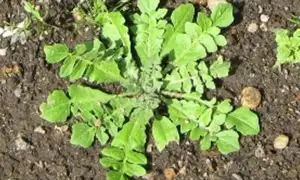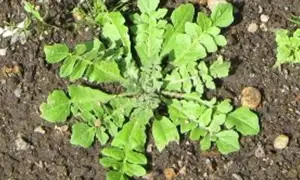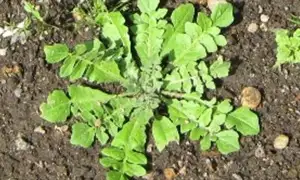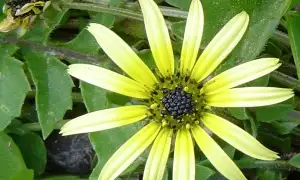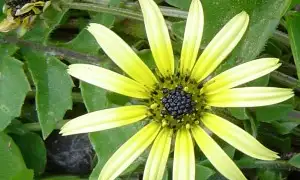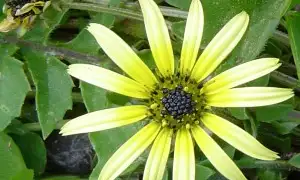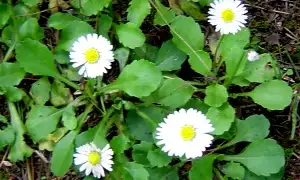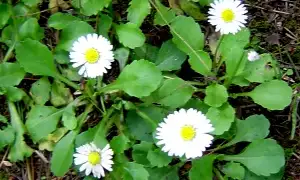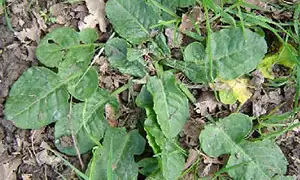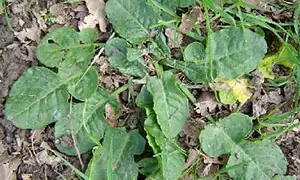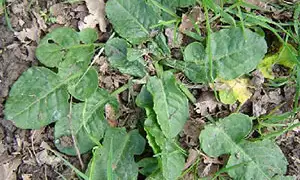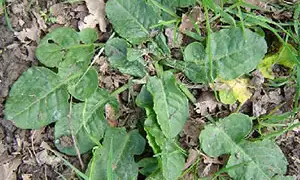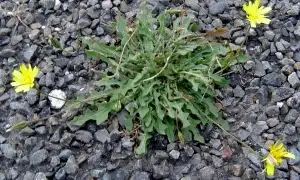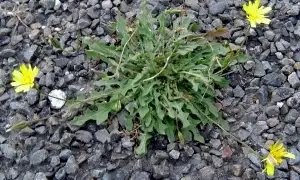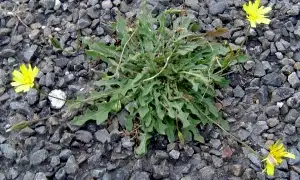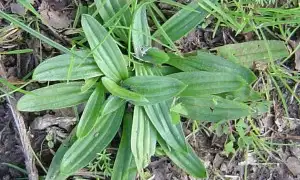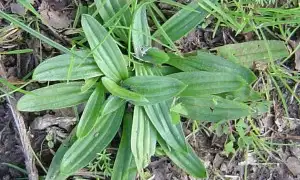Botanical name: Plantago major
Family name: Plantaginaceae
Overview
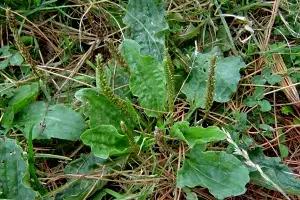
Broad-leaved plantain.
Broad-leaved plantain is a very common perennial weed found in many lawns and pastures, and often in waste places as well. It is typically found in "run-down" pastures which do not have much grass and clover in them. It doesn’t cause any harm, and is actually eaten by livestock and therefore is quite useful.
However, pastures with more broad-leaved plantain than grass are usually low-producing pastures, and so is often a sign that the pasture needs replacing. The plantains are often lumped in with dandelion and weeds similar to this species and are all called "flat weeds".
As with all these species, it tolerates low fertility conditions well. Therefore there can be some debate over whether this is really a weed in pastures. Certainly in lawns though, it has no useful features and generally creates an eye sore.
It is very similar to narrow-leaved plantain. However, broad-leaved plantain is able to tolerate compaction, water-logging and treading better than narrow-leaved plantain, which may explain why it is often more prevalent in sports fields and gateways of pastures. Narrow-leaved plantain on the other hand tends to be better able to tolerate drought. Although narrow-leaved plantain is commonly found throughout the year, broad-leaved plantain often becomes rather yellowish and sickly during winter and grows much better during warmer times of the year.
Distinguishing features

Leaf comparison between the broad-leaved plantain and the narrow-leaved plantain.
The only weed that broad-leaved plantain is likely to be confused with is narrow-leaved plantain. However, the leaf shape and width are quite different. Also, the brownish fruits on the seed head of narrow-leaved plantain are clustered closer to the tip of the stem than with broad-leaved plantain where fruits extend much further down the stem.
Both plantains have leaf veins that go down the length of the leaf, which is different to many broad-leaved species where leaf veins usually radiate out to the sides of leaves.
The plantains tend not to have a standard tap root like the other flat weeds. There is a definite crown just below ground level. However, there is usually a large number of adventitious roots spreading downward from this crown rather than a single tap root.
Control
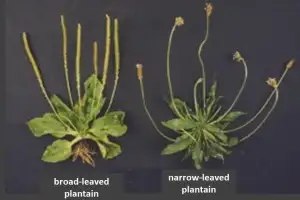
Plant comparison between the broad-leaved plantain and the narrow-leaved plantain.
Plantains are susceptible to many hormone herbicides such as 2,4-D, mecoprop and MCPA, making them easy to remove selectively from turf. Dicamba used by itself tends not to be very effective, and clopyralid (Versatill) needs to be applied at higher rates to get good control.
In pastures, MCPA could be used to control it, but if you are spraying just to get rid of broad-leaved plantain, you need to ask yourself why you are doing this. In waste areas, Broad-leaved plantain shows some tolerance to low rates of glyphosate. In orchards, it is resistant to diuron.
Similar species
Shepherd's purse
Shepherd's purse starts as a rosette and then grows an upright flower stem with heart-shaped seed pods.

